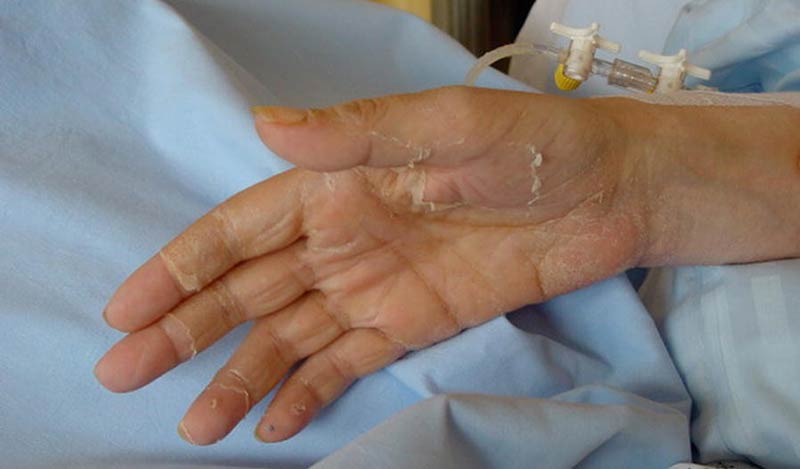Features
Streptococcal Toxic Shock Syndrome (STSS): An Overview


MBBS(Cey), DCH(Cey), DCH(Eng), MD(Paed), MRCP(UK),
FRCP(Edin), FRCP(Lond), FRCPCH(UK), FSLCPaed, FCCP, Hony. FRCPCH(UK), Hony. FCGP(SL)
Specialist Consultant Paediatrician and Honorary Senior Fellow, Postgraduate Institute of Medicine,
University of Colombo, Sri Lanka.
Joint Editor, Sri Lanka Journal of Child Health
Section Editor, Ceylon Medical Journal
There is a significant discussion besides a marked apprehension and anxiety on the subject of Streptococcal Toxic Shock Syndrome (STSS) at present, particularly because of the apparent spread of this disease somewhat widely in Japan. Streptococcal Toxic Shock Syndrome (STSS) is not a new disease and has been known for a considerable length of time. The specific term “Streptococcal Toxic Shock Syndrome” began to gain recognition around the early to mid-1980s as cases were identified and studied more closely by clinicians and researchers.
It is an extremely severe illness caused by infection with certain strains of a bug referred to as Lancefield Group A Streptococcus (GAS), scientifically known as Streptococcus pyogenes. Group A is the most notable group of this entire family of microbes associated with a variety of human infections, ranging from mild throat infections to life-threatening conditions like STSS and intensive tissue destruction known as necrotising fasciitis. STSS is characterized by a rapid onset of low blood pressure, shock, and failure of multiple organs, often leading to significant morbidity and mortality. Understanding the causation, clinical presentation, treatment strategies, and prognosis of STSS is crucial for healthcare providers to manage and mitigate the impact of this life-threatening syndrome effectively.
STSS is a rare but major illness that could affect individuals of all ages but it tends to have a higher incidence in adults and the elderly. Factors that increase the risk include chronic illnesses such as diabetes, cancer, and heart disease, as well as the use of certain medications like nonsteroidal anti-inflammatory drugs (NSAIDs) such as aspirin, ibuprofen, naproxen, and diclofenac.
The disease is caused by the entry of the causative bug into a normally sterile site, such as the bloodstream or deep tissues. The bacteria produce poisons that act as superantigens, which bypass normal antigen processing and directly stimulate a massive release of chemically active substances called cytokines. This cytokine storm leads to widespread cell damage, leaking of fluid from blood vessels called capillary leakage, a drastic drop in blood pressure leading to shock, and multi-organ failure.
Early signs include fever, chills, malaise, myalgia, nausea, vomiting, and diarrhoea. Rapid progression to shock occurs in some cases with very low blood pressure, increased heart rate, and heavy rapid breathing. Patients may develop a diffuse reddish rash on the skin which shows peeling, particularly on the palms and soles. With further progression of the clinical features multi-organ dysfunction, including kidney and liver failure, acute respiratory distress syndrome (ARDS), bleeding tendencies and altered mental status would occur.
The diagnosis of STSS is based on clinical criteria, as outlined by the Centers for Disease Control and Prevention (CDC) in Atlanta USA, and include low blood pressure and at least two of several multiple organ involvement such as of kidneys, blood clotting disturbances, liver involvement, lung involvement and soft-tissue destruction, including necrotic destruction of fascia and muscles.
The treatment of STSS requires prompt and aggressive intervention to manage blood pressure drop and shock, eradicate the infection, and support failing organs. Fluid balance and immediate correction of fluid deficits, blood pressure augmentation using specific medications, intensive antibiotic therapy using drugs that are known to specifically attack the causative microbe, intravenous immunoglobulin, and surgical care for those patients with tissue destruction. Many with complications would need intensive care with specific organ supportive care like ventilation for respiratory inadequacy and dialysis for supporting the kidneys. Intensive monitoring of many potential metabolic changes, bleeding disorders and salt balance corrections is mandatory.
STSS is associated with high mortality rates, ranging from 30% to 70%, depending on the rapidity of diagnosis and appropriate interventions. Factors contributing to poor prognosis include delayed diagnosis and treatment, older age, and presence of other comorbidities such as diabetes, and severity of the blood pressure drop as well as the presence of multi-organ failure at presentation.
Survivors of STSS may experience long-term sequelae, including chronic kidney functional disturbance, respiratory issues secondary to ARDS, psychological impacts such as post-traumatic stress disorder (PTSD) and depression, as well as physical disabilities resulting from amputations or severe soft-tissue damage.
Preventive strategies focus on early recognition and treatment of Group A Streptococcal (GAS) infections to prevent progression to invasive disease with proper wound care and hygiene, timely treatment of streptococcal pharyngitis with appropriate antibiotics and awareness as well as education about the signs and symptoms of severe GAS infections.
Streptococcal Toxic Shock Syndrome (STSS) is a medical emergency characterized by rapid onset of shock and multi-organ failure, necessitating immediate and aggressive treatment. Understanding the virulence mechanisms of GAS, the clinical manifestations of STSS, and the appropriate and early management targeted at the causative microbe, are vital initiatives for healthcare professionals. Despite advances in medical care, the high mortality rate associated with STSS underscores the importance of early recognition, prompt intervention, and supportive care, in improving patient outcomes. Continued research and education are essential to further enhance our understanding and management of this life-threatening condition.
Although the disease has not reached Sri Lanka in any significant proportion as yet, there is no time at all for complacency. It is well and good as well as most appropriate for the authorities to reassure the general public against undue anxiety but together with that, proper information regarding the disease too should be provided to the general public through all available media channels. Intense monitoring of people arriving through airports and seaports is mandatory as transcontinental travel is quite common these days. One has to keep in mind that the disease can escalate very rapidly over 24 to 48 hours and people who arrive through the ports of entry into the country may only have the earliest symptoms of the disease such as fever and general body aches at the time of arrival, only to have the situation develop very rapidly into a life-threatening illness within a very short time after arrival. Therefore, vigilance of the highest order is the very urgent need of the hour.